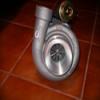Falken Azenis St215
Announcements
-
Latest Posts
-
By TurboTapin · Posted
Wife and I are still looking for a new home. One condition was a large enough garage for a full-size lift in one bay. Now if only we could find something... We've been looking for almost a year now. -
By TurboTapin · Posted
Thanks everyone for the ideas! Sadly, ramps are a no go for me. With young kids at home, I do most of my work late at night while they're sleeping. Starting the car multiple times wouldn't be a great idea. I'll go see one of those new long reach low profile jacks and take a couple measurements to see if they will fit. -
Neoman1995 did the diodes to trick ecu code 44 and 46 work? With the diodes really need to.knowthanks in advance
-
Hello guys did anyone sort this issue Neoman1995 did respond if his voltage at certain pins tricked the ecu im havn the same problem need to no if it worked tricking the ecu
-





Recommended Posts
Create an account or sign in to comment
You need to be a member in order to leave a comment
Create an account
Sign up for a new account in our community. It's easy!
Register a new accountSign in
Already have an account? Sign in here.
Sign In Now